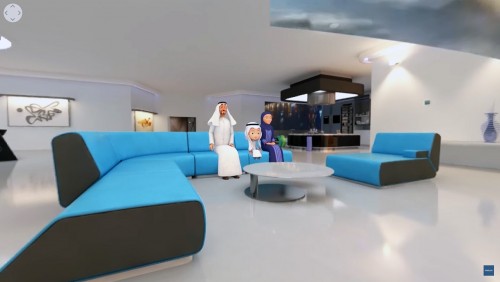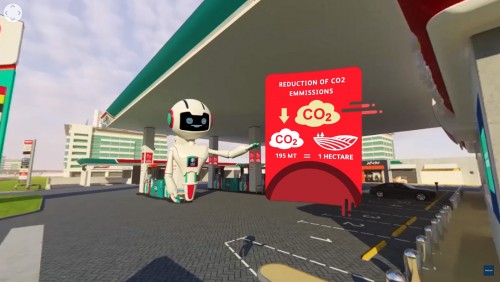3D Rendering: A Game-Changing Tool for Real Estate Marketing and Sales

The benefits of 3D rendering for real estate marketing
One of the biggest advantages of 3D rendering for real estate marketing is that it allows potential buyers to take virtual tours of properties. This is particularly useful for buyers who are unable to physically visit a property due to distance or time constraints. With 3D rendering, buyers can get a realistic sense of what it would be like to walk through a property, without ever leaving their home or office.
Another benefit of 3D rendering is that it allows real estate professionals to showcase their properties in a more visually appealing way. Traditional marketing methods, such as photographs and floor plans, can be limiting in terms of their ability to convey the full potential of a property. 3D rendering, on the other hand, allows for more creativity in the presentation of a property. For example, 3D rendering can be used to create virtual furniture and decor, giving buyers a better sense of how a space could look when it's fully furnished.
3D rendering can also save time and money for real estate professionals. In the past, creating physical models or mock-ups of a property could be a time-consuming and expensive process. With 3D rendering, however, it's possible to create realistic virtual models in a fraction of the time and at a lower cost. This can be particularly useful for real estate developers who want to showcase properties that haven't been built yet.
The impact of 3D rendering on sales
One of the biggest impacts of 3D rendering on sales is that it can help potential buyers make more informed decisions. When buyers can take virtual tours of a property, they can get a better sense of its layout, size, and overall feel. This can help them determine whether or not a property is right for them, without the need for a physical visit.
In addition, 3D rendering can help real estate professionals close sales more quickly. When buyers have a clear understanding of what a property looks like and how it's laid out, they may be more likely to make an offer. This can help real estate professionals save time and money on marketing and sales efforts.
Finally, 3D rendering can help create a more positive customer experience. When buyers can take virtual tours of a property, they may feel more engaged and invested in the buying process. This can lead to higher levels of satisfaction and loyalty among customers.
Types of 3D rendering services
There are several different types of 3D rendering services available for real estate professionals. The most common types include:
- Exterior rendering: This type of rendering is used to create virtual models of the exterior of a property. It can be useful for showcasing the overall design and layout of a property, as well as its surrounding environment.
- Interior rendering: This type of rendering is used to create virtual models of the interior of a property. It can be useful for showcasing different rooms and layouts, as well as the potential for furniture and decor.
- Virtual staging: This type of rendering is used to create virtual furniture and decor for a property. It can be useful for showcasing the potential of a space, as well as the different available design options.
The process of creating a 3D rendering
The process of creating a 3D rendering typically involves several steps. First, a real estate professional will need to provide the 3D rendering service with photographs and other information about the property. This can include floor plans, measurements, and other details.
Next, the 3D rendering service will create a virtual model of the property using specialized software. This software allows the service to create realistic textures, lighting, and other details that make the virtual model look as realistic as possible.
Finally, the 3D rendering service will provide the real estate professional with the finished product. This can typically be delivered in a variety of formats, including video, images, and interactive virtual tours.
Examples of successful 3D rendering campaigns in real estate
There are many examples of successful 3D rendering campaigns in real estate. One of the most notable is the use of 3D rendering by real estate developer Brookfield Properties. Brookfield used 3D rendering to showcase a new residential development in New York City. The virtual tour allowed potential buyers to get a realistic sense of what it would be like to live in the building, without ever leaving their homes.
Another notable example is the use of 3D rendering by real estate brokerage Redfin. Redfin used 3D rendering to create virtual staging for properties that were on the market. The virtual staging helped potential buyers get a better sense of what the property could look like when it was fully furnished and decorated.
The future of 3D rendering in real estate marketing
The future of 3D rendering in real estate marketing looks bright. As technology continues to evolve, 3D rendering will likely become even more sophisticated and realistic. This could lead to even more innovative marketing campaigns and a more immersive customer experience.
In addition, 3D rendering could become even more accessible to real estate professionals. As the cost of technology decreases, more and more real estate professionals will likely be able to take advantage of 3D rendering services.
Conclusion
In conclusion, 3D rendering is a game-changing tool for real estate marketing and sales. It allows potential buyers to take virtual tours of properties, showcases properties in a more visually appealing way, and can save time and money for real estate professionals. 3D rendering has also had a significant impact on sales, helping potential buyers make more informed decisions and closing sales more quickly. There are several different types of 3D rendering services available, and the process of creating a 3D rendering typically involves several steps. Finally, there are many examples of successful 3D rendering campaigns in real estate, and the future of 3D rendering in real estate marketing looks bright. So, if you're a real estate professional looking for an innovative and effective way to market your properties, 3D rendering is definitely worth considering.







 Call
Call
 Mail
Mail